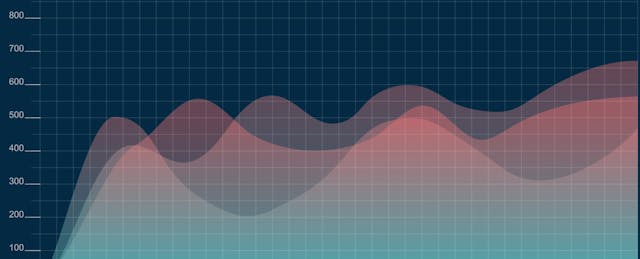Schools now have more data than ever before—from assessments, attendance, online programs, and elsewhere—but not every school can leverage this data effectively by making it visual.
While some school systems have the luxury of teams of data engineers who build internal data visualizations—which help educators see the data they’re using—or funds to invest in third party tools, other systems are doing barebones visualizations drawing data from spreadsheets that are manually updated. If only there was a way to provide sophisticated data tools to all schools, regardless of staff and funding levels.
Enter DataViz Starter Pack, a program that exists for small school districts that fall into the latter, barebones camp, and is able to provide these services for free (at least for now).
The project grew out of the Data Whiz community of practice, a group I helped found. The community is organized by the nonprofit InnovateEDU and brings together education data practitioners. Part of our mission is to create projects that can impact the education field as a whole. Specifically, the DataViz project aims to increase the capacity of staff doing data analysis in school systems in two ways:
Help Build a Data Infrastructure
The DataViz team works with each district to pull data from their edtech applications, student information system (SIS) and assessment platforms to bring it into Google Data Studio. (DataViz even publishes how they build their connectors on their blog in an effort to be open source.)
A critical aspect of this is the Ed-Fi data standard, which allows programs like DataViz to bring data together from multiple edtech vendors, aligning the data columns to a single data standard along the way.
DataViz is able to provide these services to their district partners through the early stage support from its parent organization, InnovateEDU, and is also seeking philanthropic partners to further the work. As a result, the organization is only able to support a limited number of districts (they will support 17 public and charter districts this upcoming academic year). The goal is for DataViz to become sustainable starting school year 2021.

Even though the 17 school systems use six different student information systems, their district’s data dashboards are built on top of a common data standard allowing the sharing of impactful visualizations. DataViz also curates a base reports library of common reports that schools might use, which serves as a starting point for data visualizations. And it takes dat privacy seriously.
“We set everything up with security in mind,” explains project director Marcos Alcozer. “Ed-Fi has security controls baked in, which gives us a great base to build with. We also build each district’s data infrastructure in a Google Cloud Project in their G Suite. It’s important to us that the district continues to own and control their student data and so it lives in the district’s Google Cloud where they have full access and visibility into everything that we do.”
Provide Professional Development for Districts
DataViz also develops district employees’ data skills and offers them a community where they can iterate on the initial visualizations and build new ones on their own. The team provides ongoing support around data management languages like SQL and for common tools used by school partners, including Google Big Query (a data warehousing solution) and Google Data Studio (a free data dashboard building software). If you need to learn a skill, DataViz will recommend a Codecademy tutorial along the way. A member of the DataViz also meets virtually with the teams on a bi-weekly basis.
District partners also attend an in-person convening. Because all DataViz participants use the same tools and have their data formatted in the same way, there is a common language that facilitates collaboration.
For example, Chicago’s Intrinsic Schools created a student portal with their data sets. Other DataViz partner districts are able to use this code due to the common language to set up their own student portals.
The district staff who work with DataViz are usually those without a data engineering background but have been asked to wear multiple hats. It also draws those who simply have a passion for data driven decision making. Participants in the DataViz cohort include a school principal, an operations coordinator and a director of inclusive education.
Partner Projects
Los Angeles’ Bright Star Schools and New York’s Great Oaks Schools are two of DataViz’s school network partners. Great Oaks’ Megan Benay, who is director of inclusive education, credits DataViz for accelerating the organization’s goals. Benay was asked to wear the additional hat of data management, and while Benay had some basic skills with Excel, data engineering was far outside her scope of expertise. The organization’s data team was Benay and a bank employee who was doing a year of service through fellowship.
“We were copying and pasting data from a million different places into a Google spreadsheet and saying a prayer that it was accurate,” she says. “We were not trying to make it complicated but we lacked the technical skills. We figured that this was the best we could ever hope for.” With the support of DataViz, the organization now has data dashboards in Google Data Studio, which refresh automatically whenever new data comes from the SIS and other sources.
Bright Star on the other hand does have a data team and they had been working with Google Data Studio prior to their involvement with DataViz. The organization has previously worked with other data systems, but the costs and lack of data engineering skills proved too much. David Alamo, a manager on Bright Star’s data team, proactively uses his skill in writing SQL code to create reports relevant to the needs of his district. He reaches out to DataViz team whenever he needs feedback or support. In this way, Bright Star is taking ownership of their data implementation instead of relying on a pre-packaged solution.
With help from DataViz, the team at Bright Star started a central data site dubbed Datapedia where teachers and staff can easily access data that is most meaningful to them. “The impact has been amazing so far,” said Bright Star’s director of data management Jonathan Escobar. “There is a lot of excitement in automating a lot of the reports that had previously given them headaches. The site also gives people access to data which empowers them and reduces the number of ad hoc requests we are receiving. We are now able to be data analysts rather than just report builders.”
On the Horizon
The goal for DataViz Starter Pack is for partnering school districts to eventually develop their own community of data analysts. Alcozer envisions that in the future, DataViz partners will pass on their expertise to new staff members within their district to improve data interoperability across the education sector. Even if a partner no longer needs direct support from DataViz, they can have the option to sign up for a free community license where they get to keep the data infrastructure that DataViz has created to store in their Google Cloud.
District partners like Great Oaks Schools are grateful for the services and to have had their own capacity built. Benay said, “We are learning every day and growing capacity with DataViz Starter Pack with their team and this community. They are growing analysts!”


